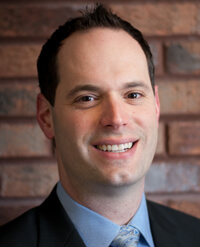
At the Annual Meeting, it’s no secret that we gain inspiration from the Main Platform and many practical ideas to take home with us from the Focus Sessions.
However, what was immediately apparent from my first Annual Meeting 10 years ago was how much value I received by chatting with you during the breaks and meals.
At my first Annual Meeting, a group of four of us were able to share so many valuable ideas — big and small — that we decided to formalize the process by forming a study group.
What makes our study group unique is that there are only four members who meet twice per year — always following some iteration of the same agenda — and it has been wonderfully successful!
This is proof that study groups can be whatever size you want them to be. Different formats work for different people. One is no better than the other.
What amazed me the most is that the agendas we developed for these meetings are extremely simple and really just consist of a few items. Here is a sample agenda:
- Positive focus: We start the meetings off with the positive focus. This is a Strategic Coach concept to get the meeting started on a positive note where everyone shares one thing that’s going really well in their personal or professional lives.
- Goal tracking: Next is goal tracking. Members share one personal and one professional goal they are working on that the group can hold them accountable to. These can be any goal — big or small. One of my goals last year was to be able to solve a Rubik’s Cube!
- One sales and one practice management idea: One of these would be a Quick Hit (two to four minutes) and the other more detailed at five to 10 minutes.
- Homework challenge: This is a challenge we keep each other accountable to, such as getting published in “Round the Table” magazine or performing a random act of kindness anonymously.
- Open conversation: We always leave the last hour of the meeting for open conversation. Here we talk about whatever we want, and it is often this area that yields some of the best ideas.
Many people find the prospect of starting a study group daunting, but it really doesn’t have to be. Take time to chat with your fellow members during the breaks and share ideas. These don’t have to be earth-shattering insights. Simply share what works well in your business, and, before you know it, you will have your study group up and running.

Jedediah Harrison Levene, CFP, CLU, is a 10-year MDRT member with one Court of the Table qualification who has been in the financial services profession since 2004. He holds an MBA from Dalhousie University and a certificate in behavioral finance from Duke University. His practice focuses on goals-based financial planning for business owners and professionals.